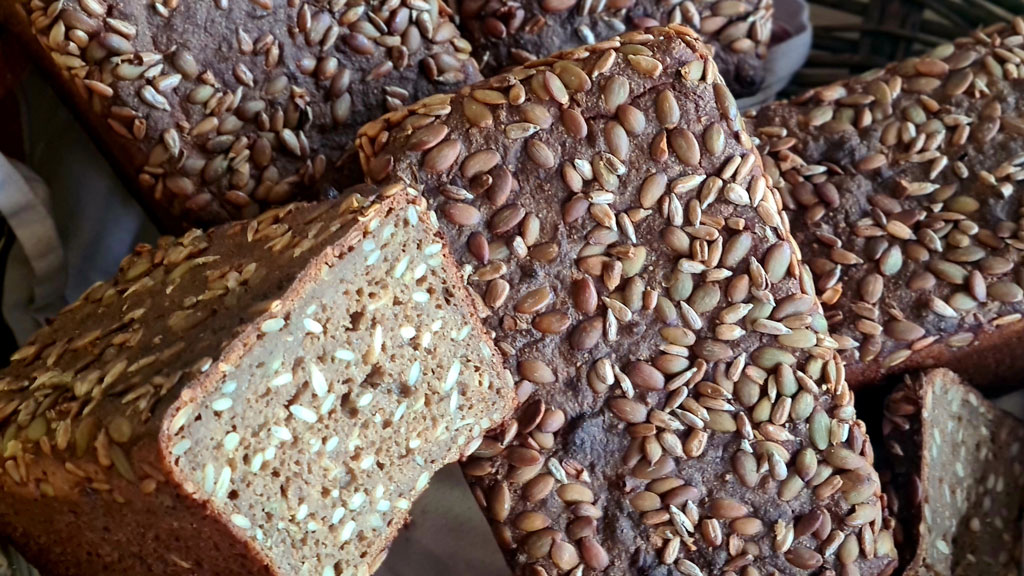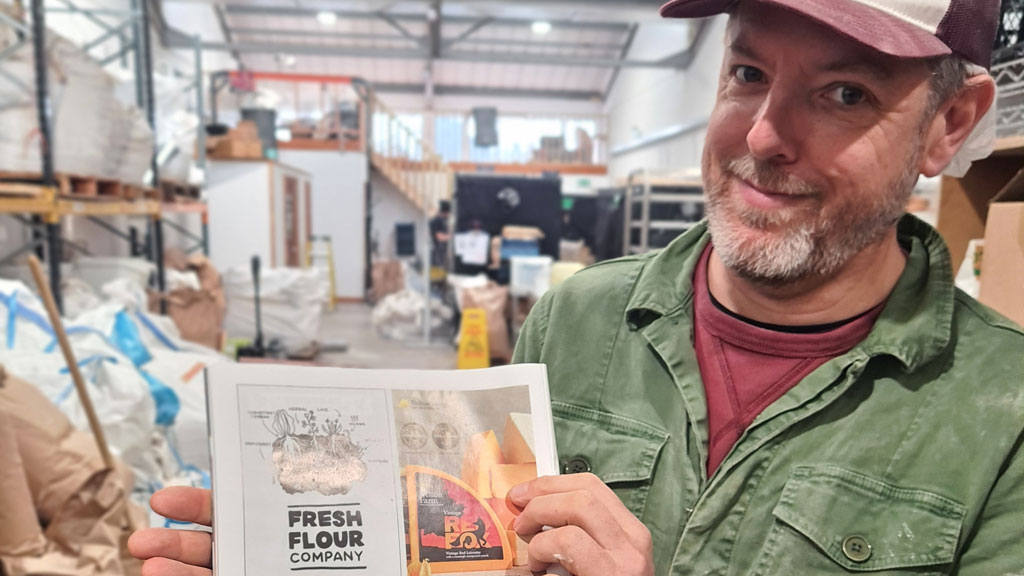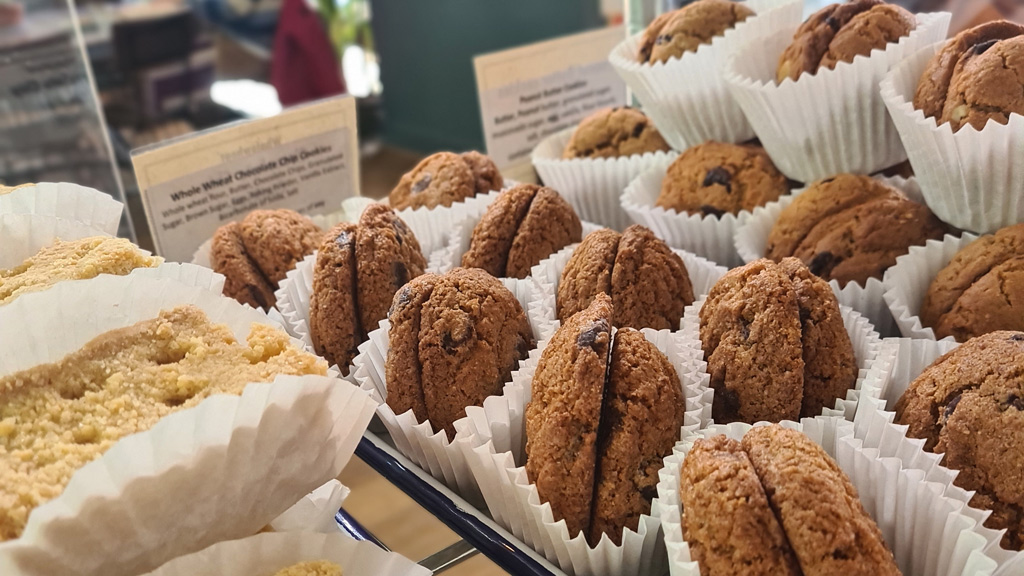
Tara Vaughan-Hughes
Tara, the Food Strategy Lead for Dartington, links our food areas across the estate (retail, pub, cafe, and higher learning) to create and maintain a sustainable food system that aligns with our current and future aspirations.
‘We want our food to be good – for the farmers, for the producers, for the animals, for the land, and for your palate.’
It pretty clearly says what we are trying to do (to me at least, but then again, I wrote it). But it doesn’t explain how we do this, or what it means to be, for example, ‘good to the land’.
So I’ll tell you one way we follow our mission, and that is through our bread.

First, the background.
Conventional farming methods using chemical-heavy farming techniques are one of the causes of soil degradation, which is a decline in quality, structure and condition of the soil. This is a problem because unhealthy and eroding soil makes growing food more difficult and more expensive.
Without healthy soil, farmers won’t be able to grow nutrient-dense food to feed the world’s growing population. Some experts fear that the earth will run out of usable topsoil within 60 years. If this comes to pass, it may not affect you, but it will most certainly affect your children and grandchildren, and my children and grandchildren. The food security of their future is in serious doubt.
So what will help?
Restoring health to the soil will reverse this trend and – bonus! — draw down carbon. And currently, the best bet to create healthy soil is to turn to regenerative farming.
This is a method of farming that focuses on soil life (not chemistry) to produce a crop. So we’re talking about organisms like threadworms, earthworms, springtails, mites, and insect larvae, among other things; and microorganisms such as bacteria, protists, fungi, and many more. These tiny things eat plant and animal material, living and dead, and transform it into nutrients.
This process builds organic matter and structure into the soil. And this in turn yields nutrient-rich crops, which of course is what farming should be all about.
But what’s that got to do with bread?
Farmers all over the world, including in the UK, have started to grow crops regeneratively. (To be fair, some always have been.) When we prioritise buying these crops, we can do our part to help change the world. It’s that simple.
We support Fresh Flour in Buckfastleigh, founded and run by Andy Gilhespy. Andy only buys local and regeneratively grown grain which he mills to order. We use his wholemeal rye flour in our seeded sourdough rye bread, which flies off the shelves at the Cider Press Centre and is a big hit at the Green Table as well.
Besides milling, Andy also uses the resulting flours to make crackers, biscuits, pasta and ramen, all of which are delicious. The pasta needs a keen eye when cooking because of the low gluten content (it is difficult to grow a high-gluten wheat in the UK). Chef Adam at the White Hart has this eye and has made some lovely things with the ramen. And we have had glowing reports from customers who have bought Andy’s products from the Food Shop at the Cider Press Centre.

We also buy from WildFarmed, a regenerative flour company started by Andy Cato of Groove Armada. We use their flour for our cookies and shortbread, and head baker Sophie and crew are working on expanding the range. Because the flour is not standardised (unlike most large-scale flours, which contain enzymes and additives to create a uniform product), its humidity changes from batch to batch, testing the skills and patience of the baking team. But they are getting there, and it’s all delicious so far!
We still use Dove’s Farm or Shipton Mill organic flour in our other bakes, and we are happy to support these stalwarts of organic farming. But we also are hoping that some of these larger millers will recognise the importance of buying and milling regeneratively grown wheat.

Let’s be blunt: most people are turned off by the price. Regeneratively grown food costs almost twice as much more than conventional food.
Why? One of the first things a farmer has to do is restore health to the soil. That can take a few years — years in which there is no harvest and therefore no income, but there are outgoings in seed and labour. That has to be paid back somewhere.
Regenerative farming also currently has no subsidies, unlike conventional agriculture. But honestly, if you need a subsidy to run your business and to be paid appropriately, your working model is not viable.
Because of this, you could say that regenerative agriculture shows us the true cost of our food. This is not a bad thing. We just need to adjust how we value food, and to take better care of it. (The world currently wastes 40% of all food grown for human consumption – that’s almost half! So in a sense, we are already paying the price we would pay for regeneratively farmed goods, but we are throwing half of it away.)
In the Dartington kitchens, we work hard to minimise waste and maximise profit. And when we use these higher end products, we are conscious of portion size, costs of other ingredients, and labour. In that way, we can keep the cost reasonable for everyone and still support our suppliers as well as Dartington Trust.
In other words, good for the land, good for the people and very good indeed for your palate.
